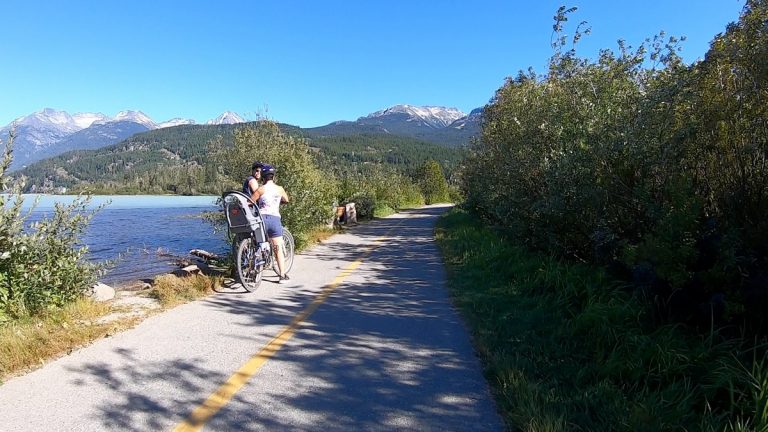The Valley trails in Whistler, B.C. provide over 40km of maintained multi-use trails connecting Whistler Village to Green Lake to the north, and Function Junction to the south. The trails are a mixed of gravel and paved paths which make cycling on them easy for anyone. The trails run through different settings such as within forested areas, alongside a road or lake, or in a meadow like along the hydro cut. The shade provided by the trees along most of the trails make the bike ride reasonably comfortable especially on a warm summer day. Here are a couple time lapsed Continue Reading
Travels
A record of my travels around the globe.
Driving the British Columbia Coast Mountain Circle Route
This past B.C. Day, I wanted to get out of Metro Vancouver, where I’ve been “stuck” for the past five months, but I only had the one day free to do it. I was debating whether to do a trip up north to Whistler, or to the east to Manning Park (pretty much the only two directions one can drive from Vancouver. However, I’ve been to both of these places. I wanted to explore something new. I remembered that I had wanted to do the Coast Mountain Circle Route, the smallest “loop” that one can make going out of Metro Continue Reading
Whistler Ski Run Topographic Map
Whistler Blackcomb is pretty big, so one would usually look at a map to find suitable runs. What is provided in the “Mountain Atlas” looks nice and mostly works, but for map geeks is there anything better? Turns out that Google Maps conveniently has the ski runs in its map. But there’s more: Google Maps in Terrain mode shows the contour lines like a topographic map!
Transit highlights from my Toronto trip
While I was in Toronto these past few days, I got a chance to see two of Toronto Transit Commission’s (TTC) newest transit vehicles. For those unfamiliar with public transportation in the Greater Toronto Area, a number of transit authorities provide local transit service within different regions in the GTA. The TTC provides transportation services within the Toronto proper, including the subways, streetcars and bus service. I suppose a more detailed introduction to the different public transportation services would be ideal in a separate post. The articulated buses The first were the Nova Bus LFS articulated buses. These buses, introduced Continue Reading
